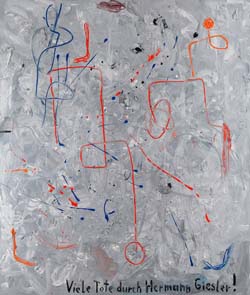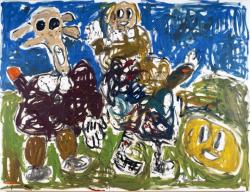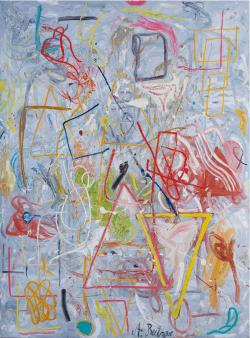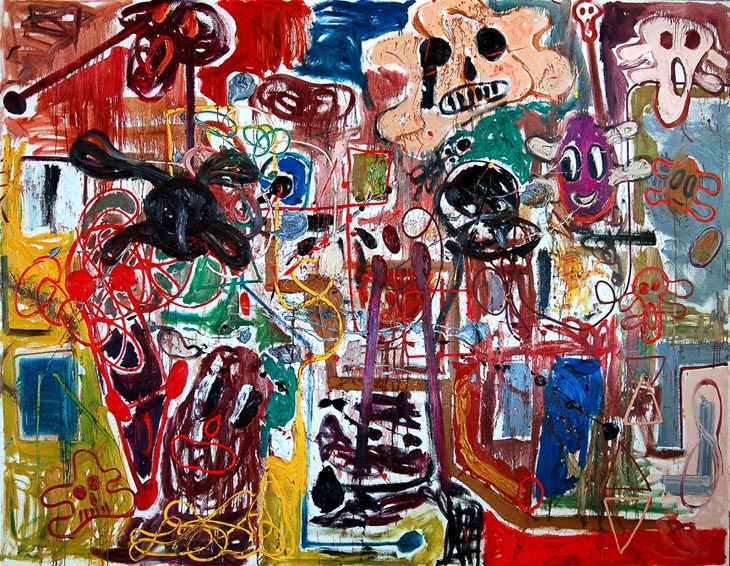

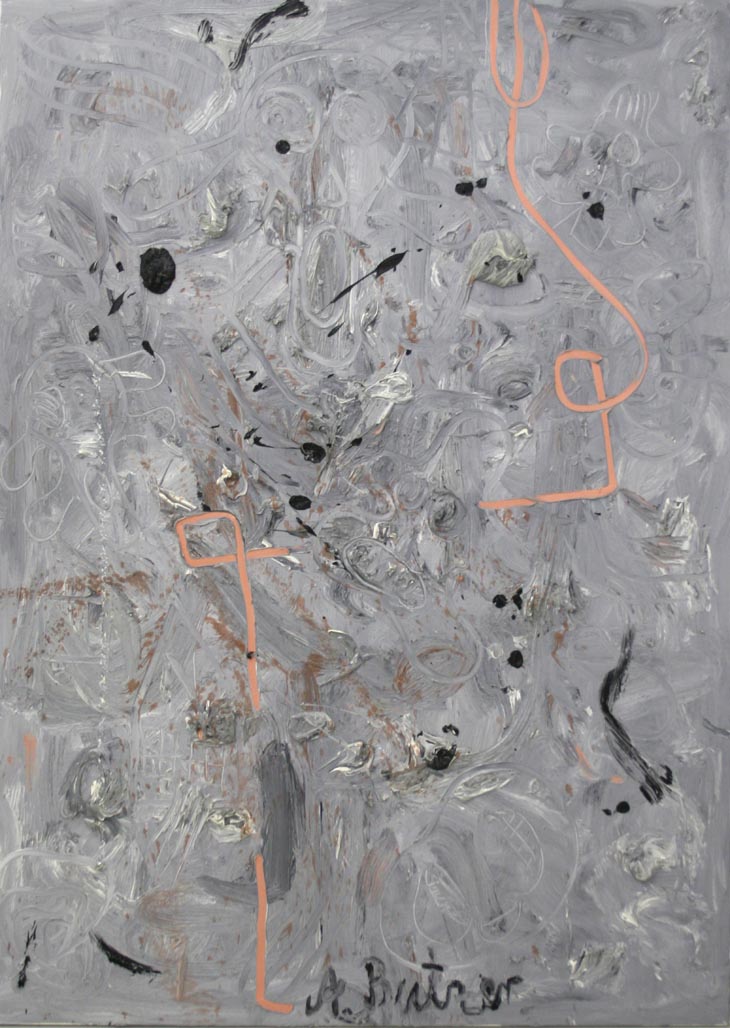
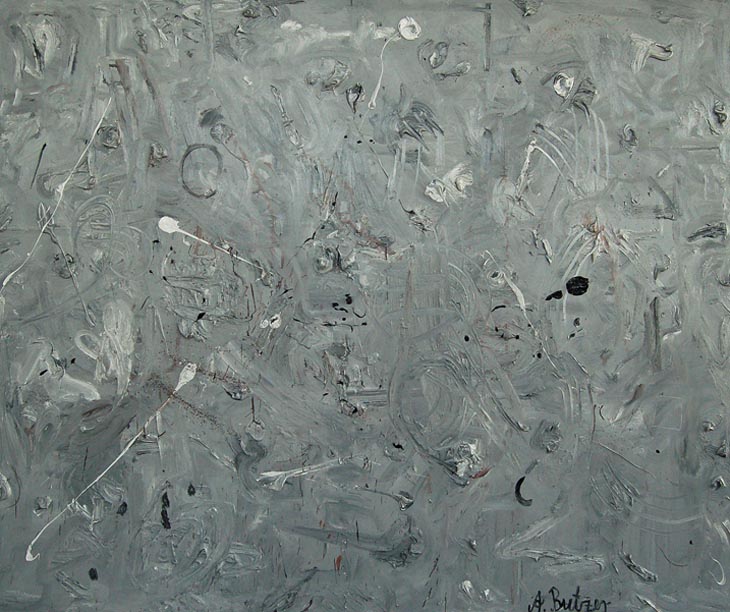
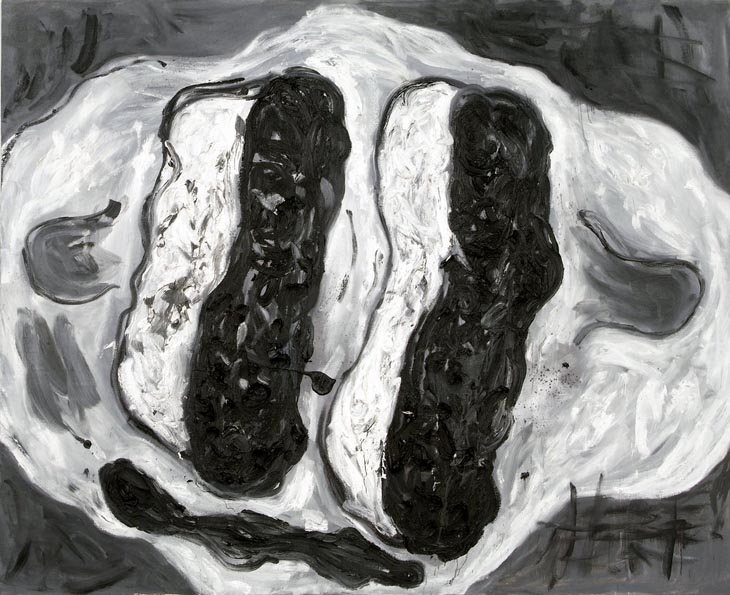
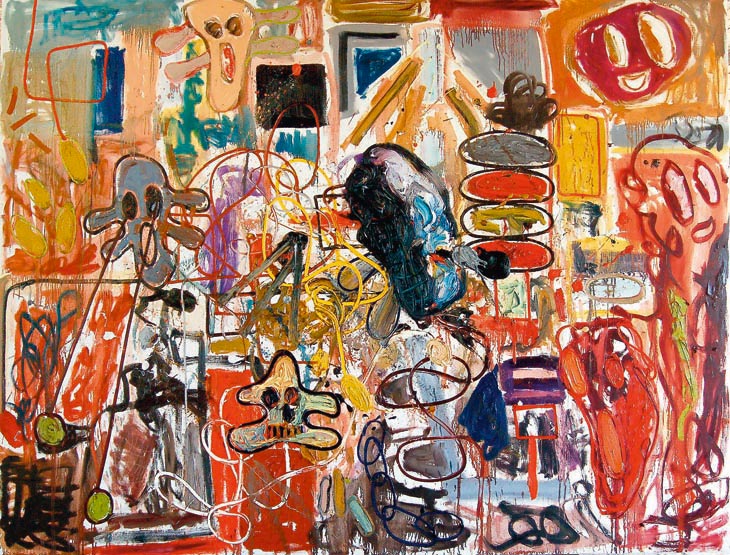

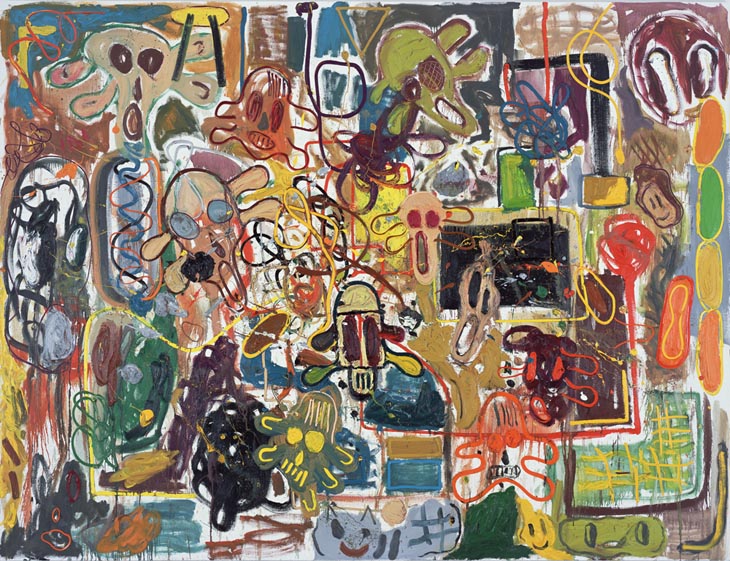
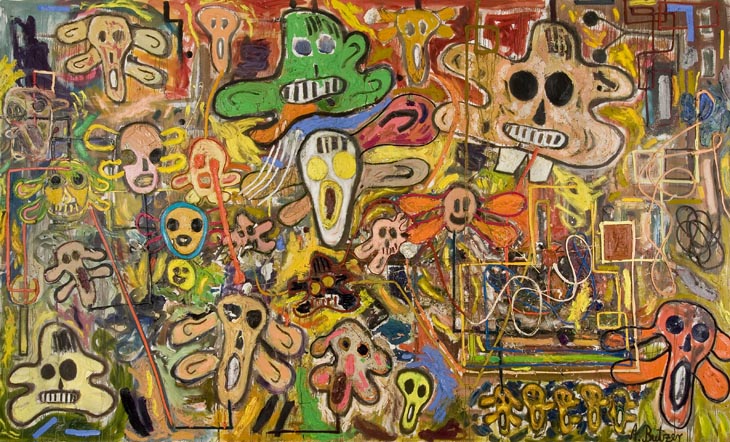
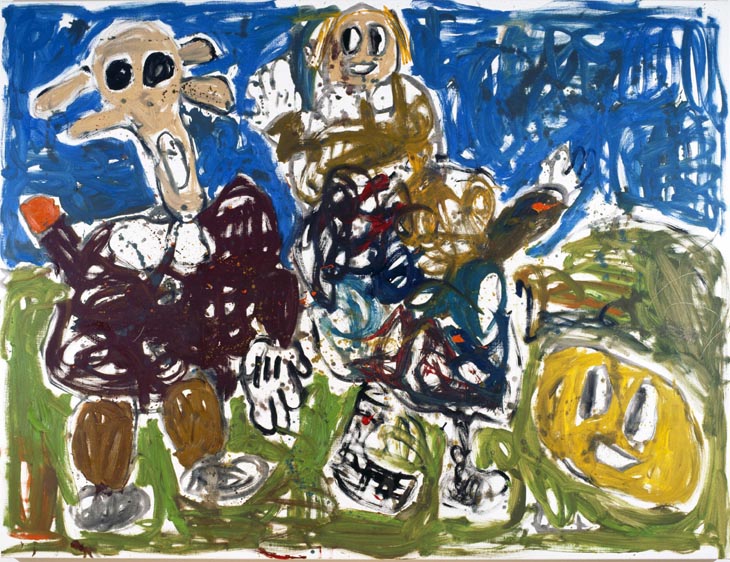
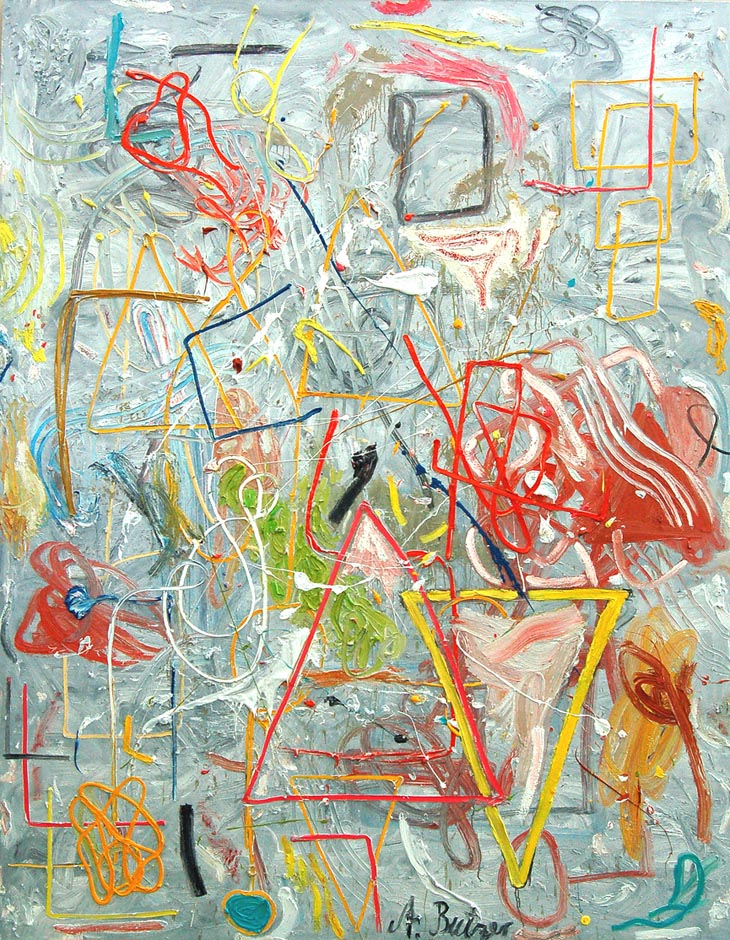
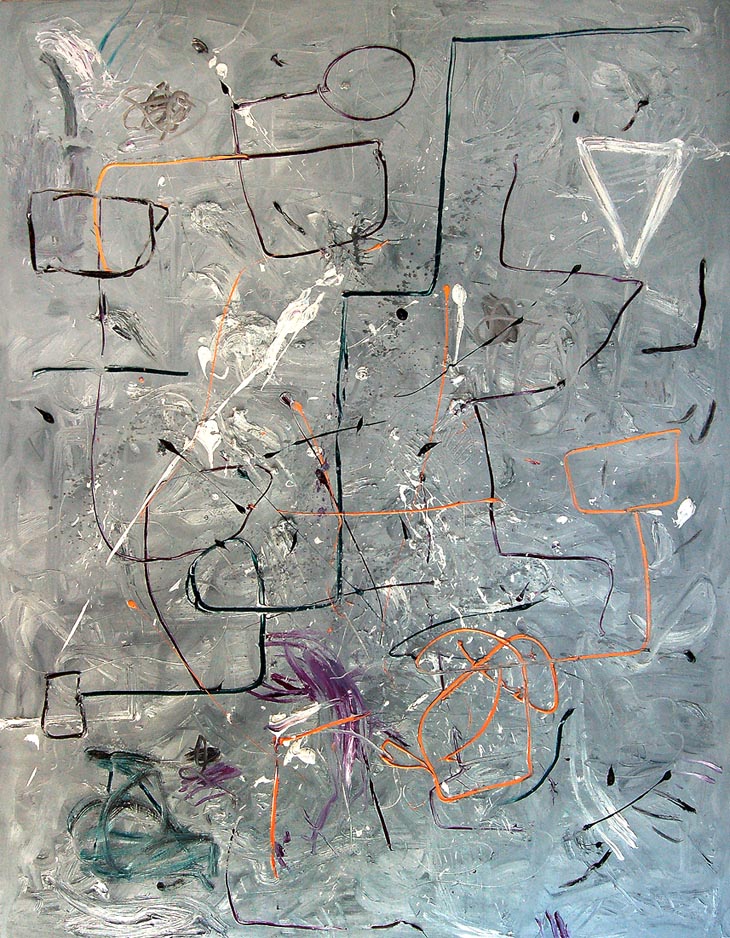

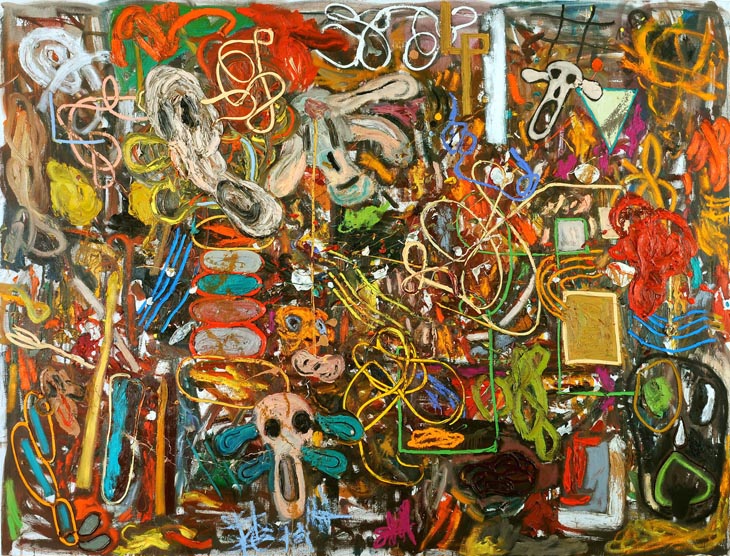
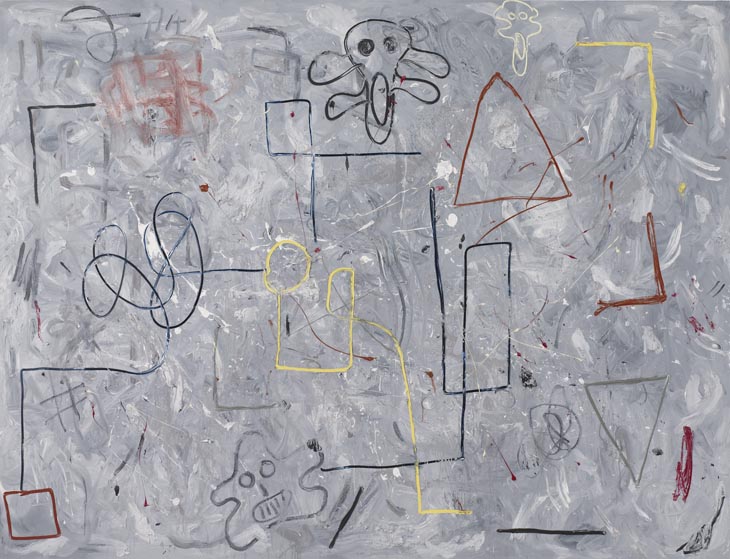
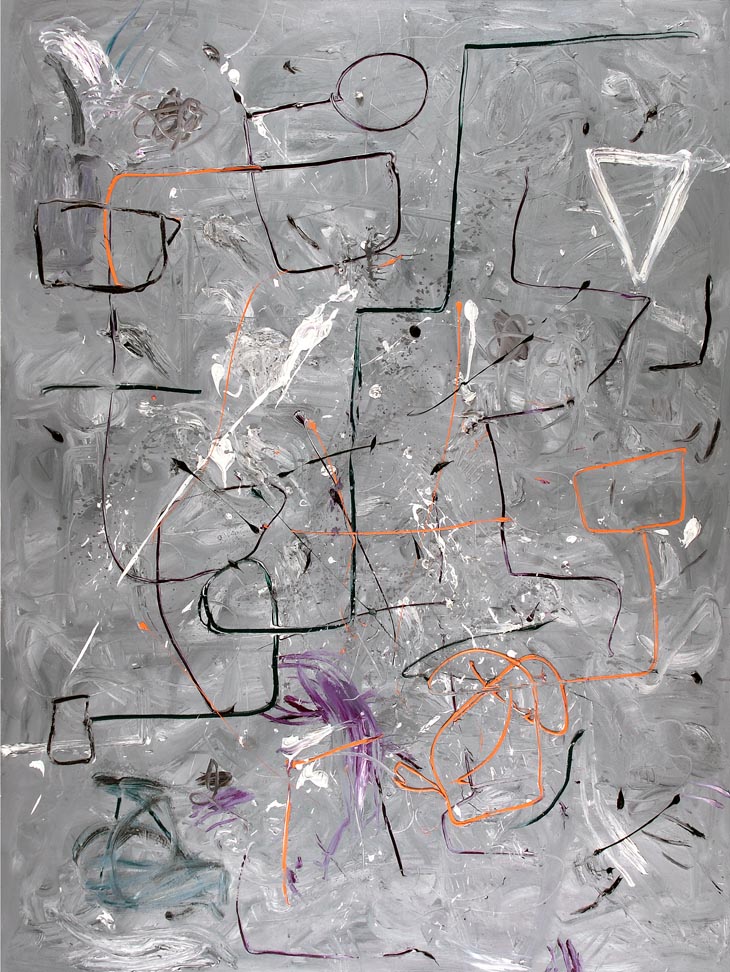



ARTIST:
André Butzer
Butzer’s canvases bully the viewer with their aggressive intensity: their surfaces textured like corroded debris, carved through with manic gestures, and ooze gobs of offensive colours, while reoccurring motifs of screaming faces, phalluses, ecstasy tablet logos, and sperm war against each other in anarchic ritual. Raw with egoism, machismo, and zeal, Butzer’s paintings serve up contemporary anxiety with a violent potency that’s vehement, heroic and bereft.
Three other Untitled works (all 2007), which also combine abstraction with figuration, explore similar ideas but through a much more restrained almost greyscale palette. Their pared-down unfilled faux naïve geometric shapes recall surrealist compositions and Cy Twombly’s accumulated mark-making. Equally romantic and nihilistic, the artist has described these works as ‘the kind of things Donald Duck would do when he paints’.
The repetition of the same exaggerated, anxious faces and unmasked pleasure in the physical act of painting appears in two works named Untitled (both 2007). A sense of urgent immediacy is articulated through their high impasto technique and vivid, almost neon-toned colours. Butzer doodles wildly over dark or light backgrounds in separated, unblended clusters, reminiscent of Joan Mitchell’s abstract expressionist canvases. His embrace of an unapologetically bright and varied paint box is conceptual: ‘Colour is basically about history. To animate colour is historic in the way that the image will tell us about the future and the past.’
The whole composition brings to mind the rambunctious street art references in Basquiat’s abstractions and the dark symbolism of James Ensor’s grotesque carnival of covered faces. The juxtaposition of American pop art gestures and German Expressionism conveys an angst and horror at the consumerism and globalisation of post-war and contemporary culture. That the painting’s title means ‘ancestral portrait’ is also a clue to the work’s subtext, a jaw-dropping, unstoppable regurgitation of the modalities of its medium.
André Butzer’s mural-like canvases are a compression of painting’s recent history in all its totality, animated by the artist’s trademark anarchic visual codes. Ahnenbild 2411 (2006) is overrun with a roughly executed, psychedelic use of colour and the frantic repetition of a hollow-eyed mask, at turns grinning like early 20th-century cartoons or expressing ugliness and terror à la Munch’s Scream or de Kooning’s Woman paintings.

